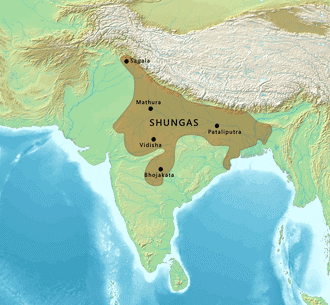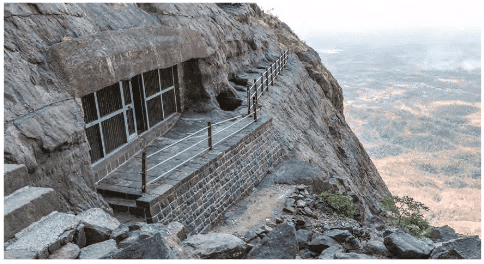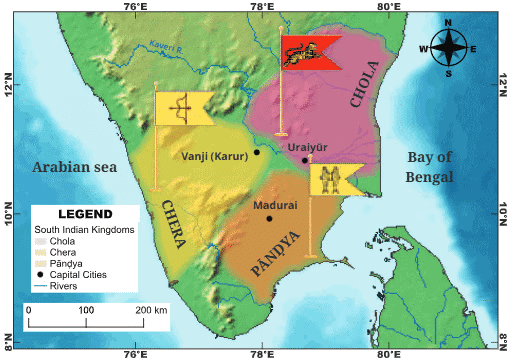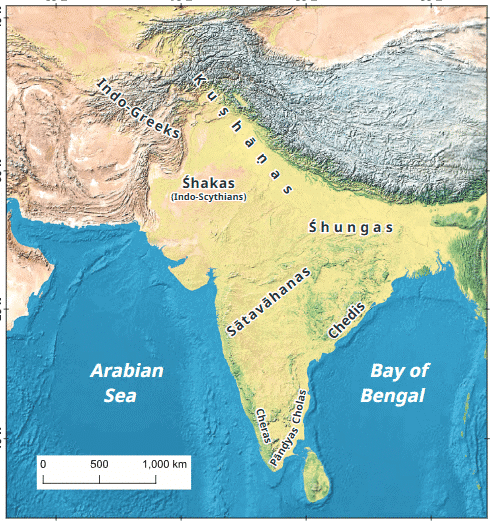Class 7 Social Science Chapter 6 Question Answers - The Age of Reorganization
Short Answer Questions
Q1: How did the Śhunga dynasty come to power?
Ans: The Śhunga dynasty was founded by Puṣhyamitra Śhunga after he assassinated the last Maurya emperor in 185 BCE. Puṣhyamitra, a commander in the Maurya army, seized power and began ruling parts of northern and central India.
 Shunga Dynasty
Shunga Dynasty
Q2: What impact did the Śhunga Empire have on art and culture?
Ans: The Śhunga Empire supported literature, art, and architecture, leading to significant cultural contributions. They added carvings to the Bharhut Stūpa and promoted Sanskrit as a language for philosophy and literature.
Q3: How did the Sātavāhanas contribute to trade and the economy?
Ans: The Sātavāhanas promoted trade by controlling important trade routes and engaging in maritime trade with the Roman Empire. Their economy thrived due to agriculture, the fertile river systems, and the wealth generated from trade.
Q4: What role did the Naneghat Caves play in trade during the Sātavāhana period?
Ans: The Naneghat Caves, located along trade routes, were used for collecting tolls from traders. They also served as resting places for traders on their journey through the region.
 Naneghat Cave Near Pune
Naneghat Cave Near Pune
Q5: How did the kingdoms of south India, like the Cheras, Cholas, and Pāṇḍyas, promote trade?
Ans: The south Indian kingdoms promoted trade by exporting goods such as spices, timber, ivory, and pearls. They maintained strong trade connections with the Roman Empire and other regions, boosting their economies.
Q6: What does the Silappadikāram tell us about the Chola, Pāṇḍya, and Chera kingdoms?
Ans: The Silappadikāram, an epic from the Sangam Age, highlights the values of justice and the responsibilities of rulers. It showcases life in the Chola, Pāṇḍya, and Chera kingdoms, including their cultural practices, justice systems, and social norms.
 Chera, Chola, Pandya
Chera, Chola, Pandya
Q7: How did King Karikāla contribute to the agricultural development of the Chola kingdom?
Ans: King Karikāla built the Kallanai (Grand Anicut), a water diversion system on the Kāveri River, to irrigate the delta. This allowed the Chola kingdom to become the “rice bowl of the South” and greatly boosted agricultural productivity.
Q8: What was the significance of the Chera kingdom in the context of trade and culture?
Ans: The Chera kingdom was important for its role in trading spices, timber, ivory, and pearls. It also supported Tamil literature, including Sangam poetry, and was a center for cultural exchange with other regions.
Q9: How did the Pāṇḍyas contribute to India’s trade relations with other regions?
Ans: The Pāṇḍyas were key players in the pearl trade, exchanging pearls and other goods with the Greeks and Romans. They also maintained a strong naval presence, which helped establish their trade networks.
Q10: What was the role of Khāravela in promoting Jainism?
Ans: Khāravela, the ruler of the Chedi dynasty, promoted Jainism and built the Udayagiri-Khandagiri Caves as shelters for Jain monks. He was known for his religious tolerance and support for all schools of thought.
Q11: What is the significance of the Indo-Greek rulers in India’s cultural history?
Ans: The Indo-Greek rulers introduced Greek art and culture to India, blending it with Indian traditions. They promoted Hellenistic styles in art, coinage, and governance, which influenced later Indian artistic traditions.
Q12: How did the Kuṣhāṇas impact India’s cultural and trade connections?
Ans: The Kuṣhāṇas promoted trade along the Silk Route, linking India to Central Asia and the West. They also supported the spread of Buddhism and their art, such as the Gandhara and Mathura styles, combined Greek and Indian influences.
 Prominent Dynasties of India during Reorganisation
Prominent Dynasties of India during Reorganisation
Long Answer Questions
Q1: What factors led to the decline of the Maurya Empire and the rise of new kingdoms?
Ans: The Maurya Empire weakened after Aśhoka’s death due to weak successors and internal conflicts. Distant regions broke away, and local rulers regained independence. Economic decline and invasion by foreign groups further weakened central control. These factors led to the rise of new kingdoms like the Śhungas, Sātavāhanas, and Chedis, who took advantage of the political vacuum to expand their territories.
Q2: How did Puṣhyamitra Śhunga’s rule differ from the Maurya Empire?
Ans: Puṣhyamitra Śhunga founded the Śhunga dynasty after assassinating the last Maurya emperor. Unlike the Mauryas, who were more inclusive of various religions, the Śhungas promoted Vedic rituals and Hindu practices. Puṣhyamitra also sought to maintain control through military action and alliances, like those with the Greeks, whereas the Mauryas relied on a more centralized system of governance.
Q3: What role did the Sātavāhanas play in trade and cultural development?
Ans: The Sātavāhanas were instrumental in fostering trade, especially maritime trade with the Roman Empire, and boosting agriculture through the fertile Krishna-Godavari river system. Their coins, often depicting ships, reflect their strong maritime connections. They also supported cultural growth, encouraging literature, art, and religious tolerance, contributing to India’s cultural richness during the 2nd century BCE.
Q4: Describe the role of the Chera, Chola, and Pāṇḍya kingdoms in shaping the South Indian economy and culture.
Ans: The Cheras, Cholas, and Pāṇḍyas contributed to South India’s economic prosperity through trade in spices, timber, ivory, and pearls. They also played a central role in cultural development by supporting Tamil literature and Sangam poetry. These kingdoms maintained strong trade relations with the Roman Empire and other foreign regions, enriching their economy and culture.
Q5: How did Khāravela of the Chedi dynasty contribute to the promotion of Jainism?
Ans: Khāravela was a strong advocate of Jainism, and he made significant contributions to the religion by building the Udayagiri-Khandagiri Caves for Jain monks. His reign was marked by the patronage of Jainism, but he also respected other religions. His inscriptions and actions reflect his commitment to religious tolerance and his support for Jain principles.
Q6: What was the cultural significance of the Indo-Greek rulers in India?
Ans: The Indo-Greek rulers, after Alexander’s invasion, introduced Greek cultural elements to India. They adopted Indian customs and incorporated them into Greek art, leading to a blend of both cultures, particularly in art and coinage. The Gandhara school of art, which depicted Buddha with Greek influences, is a key example of this cultural fusion. Their rule helped connect India with the Mediterranean world.
Q7: What were the key achievements of the Kuṣhāṇa Empire in India?
Ans: The Kuṣhāṇa Empire, under King Kaniṣhka, significantly influenced India’s culture and trade. They controlled parts of the Silk Route, facilitating trade between India, Central Asia, and the West. Kaniṣhka supported the spread of Buddhism and promoted the Gandhara and Mathura schools of art. These schools of art combined Greek and Indian styles, depicting realistic figures of deities and Buddha, influencing Indian sculpture.
Q8: What was the significance of the Silappadikāram during the Sangam Age?
Ans: The Silappadikāram is an epic that highlights the justice system and cultural values of the time. It tells the story of Kannagi, who proved her husband’s innocence after he was falsely accused, showcasing the importance of truth and justice. The epic provides valuable insights into the society, governance, and culture of the Chola, Pāṇḍya, and Chera kingdoms, reflecting their commitment to fairness and moral values.
|
23 videos|272 docs|12 tests
|
FAQs on Class 7 Social Science Chapter 6 Question Answers - The Age of Reorganization
| 1. What were the main causes of the Age of Reorganization? |  |
| 2. How did the Age of Reorganization affect social structures? |  |
| 3. What were the key political changes during the Age of Reorganization? |  |
| 4. How did the Age of Reorganization impact the economy? |  |
| 5. What role did culture play during the Age of Reorganization? |  |
















